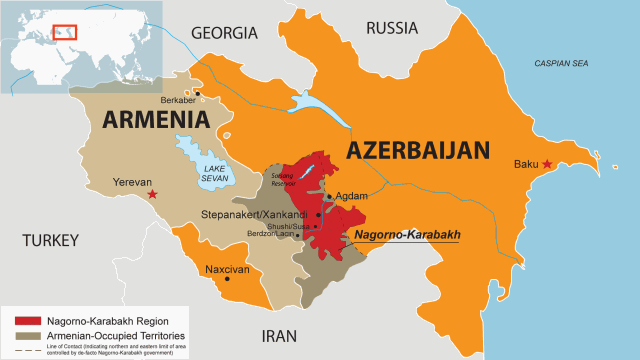Azerbaijan and Armenian separatists in the breakaway region of Nagorno-Karabakh have said they are halting hostilities after four days of intense fighting between them, which had prompted warnings the conflict could spiral into all-out war. The ceasefire announcement came as several European countries urged an end to the fighting, worried that an escalation could cause instability in a region that serves as a corridor for pipelines taking oil and gas to world markets. The fighting has been the bloodiest in years, and has claimed at least 64 lives in total since it erupted.

- Ex-Soviet states Azerbaijan and Armenia fought a war over the mountainous territory in the early 1990s in which thousands were killed on both sides and hundreds of thousands displaced.
- The war ended with a fragile truce in 1994, followed since by sporadic bouts of violence.
- The truce was shattered over the weekend, with the two sides exchanging heavy fire using artillery, tanks, rocket systems and helicopters.
- Nagorno-Karabakh is a mountainous enclave with a large ethnic Armenian population that lies inside the territory of Azerbaijan.
- The violence was a re-awakening of a long-festering ethnic conflict between the mainly Muslim Azeris and their Christian Armenian neighbours.
- Envoys from Russia, France and the United States — who make up a body called the Minsk Group which mediates in the conflict — were planning to head to the region, French Foreign Minister Jean-Marc Ayrault said in Paris.
Did You Know?
- Capital of Azerbaijan – Baku
- Currency of Azerbaijan – Manat
- Capital of Armenia – Yerevan
- Currency of Armenia – Dram
















